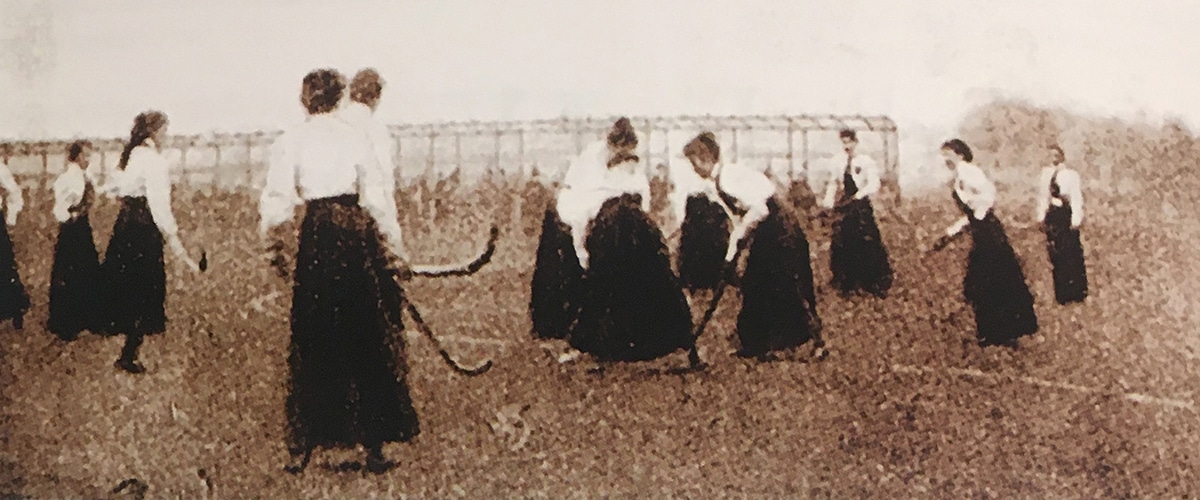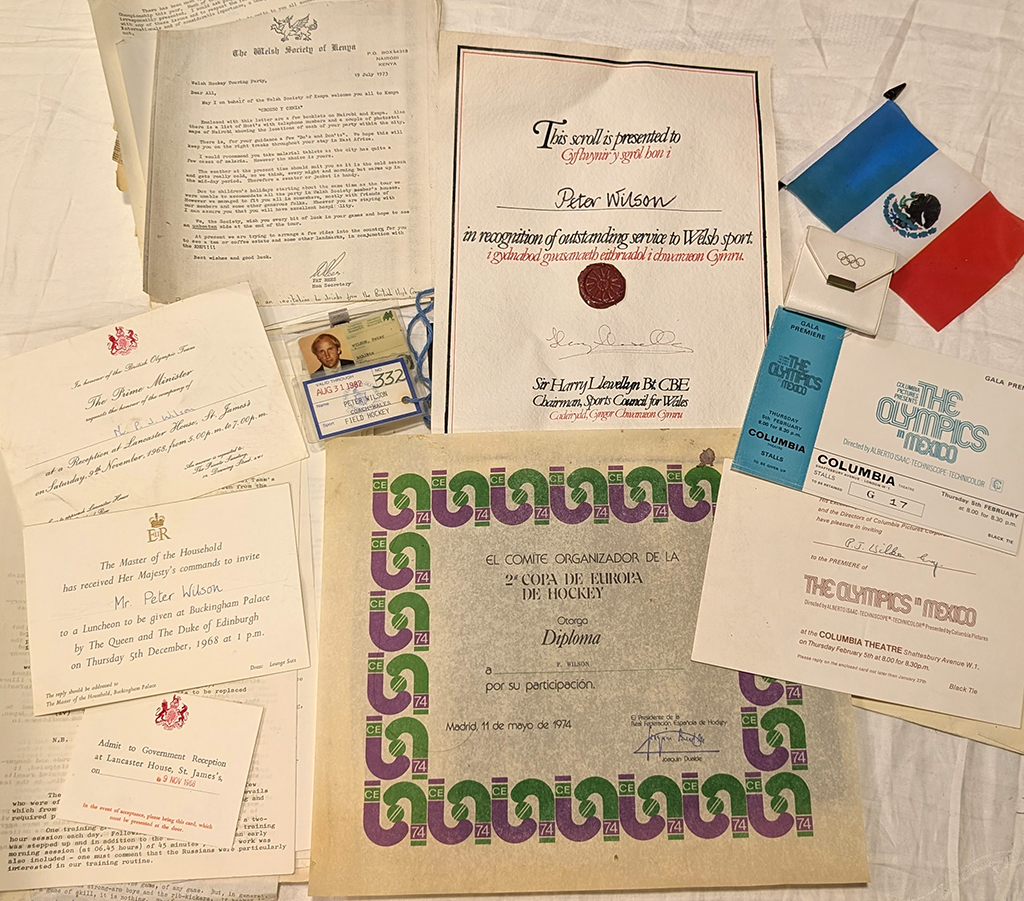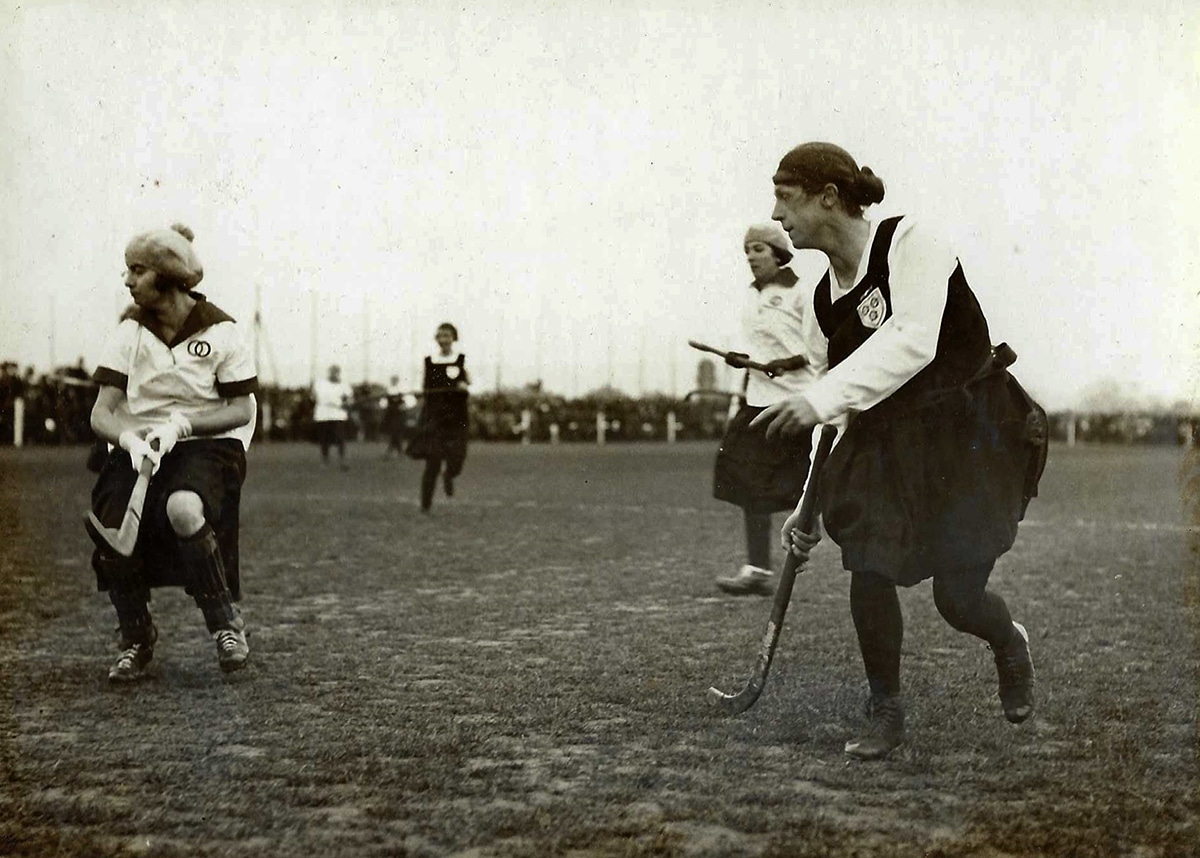There are few things in everyday life that could be described as ubiquitous hockey items. However, one exception are the canvas and rubber hockey shoes that were widely worn in the ladies and school game from the 1930s onwards. Men’s hockey of the era preferred the more substantial football or rugby boots.
Your ‘scribe’ remembers his father describing these canvas and rubber hockey shoes as “worse than useless” because they offered no real protection against a hard leather ball or wooden sticks. Nonetheless, they sold in vast numbers into the ladies and schools hockey markets where cost was an extremely critical factor. In those decades no sports shop could afford to be without these essential sellers.
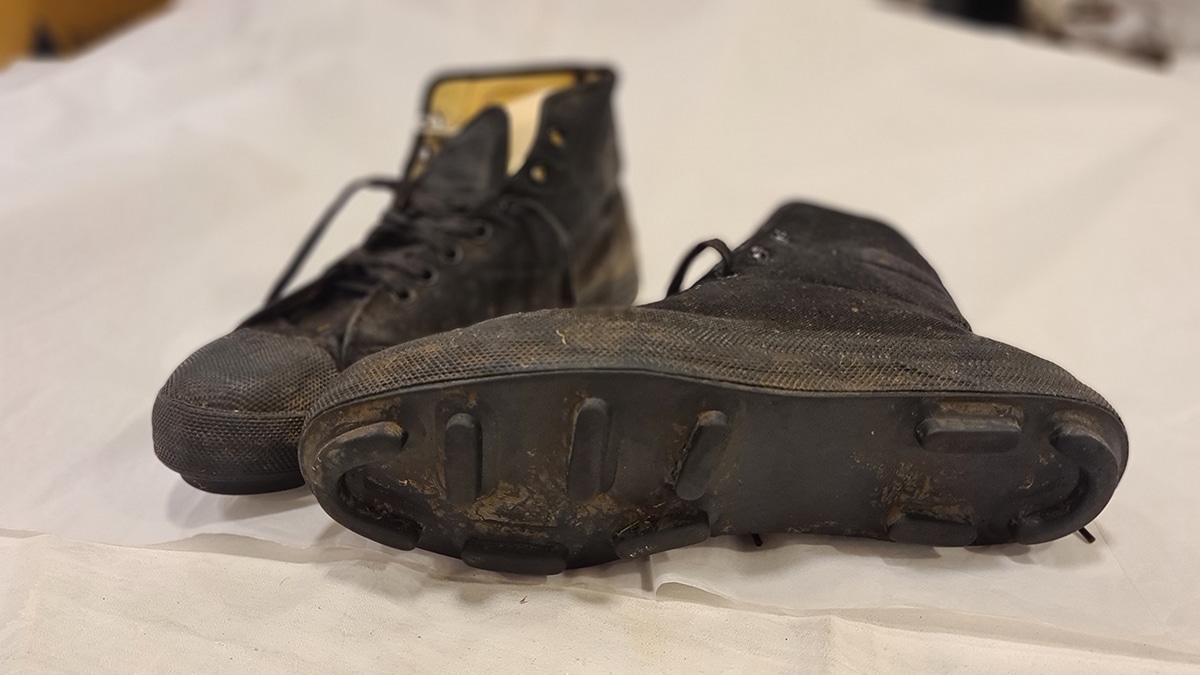 |
|
Canvas and rubber hockey boots, 1930s. From The Hockey Museum’s collection. |
Now fresh research has revealed perhaps their greatest claim to fame. During the Second World War (WW2) hockey boots were adopted and adapted for use in jungle warfare, embraced by the Chindits during the terrible fighting against the Japanese in the Burmese jungle (modern-day Myanmar).
Footwear in the jungle was always problematic. As recounted on the militaria blog Tales from the Supply Depot:
“Boots need to be tough to stand up to the rugged terrain, light for comfort, rot proof to prevent them falling apart too quickly and both waterproof for walking in rain showers and quick to dry when they do get soaked wading through swamps. Combining all these requirements in one design was clearly a tall order, however by the middle of World War Two it was clear that the standard British Army hobnailed boot was hopelessly unsuited for jungle wear.”
An official army training pamphlet of the time advised: “canvas and rubber-soled hockey boots (procurable in most tropical towns) are an efficient form of footwear”.
The Chindits were long-distance special operations units of the British and Indian armies. They wore regular tropical uniforms and army boots, but were specially equipped for the Burmese jungle with Australian-style slouch hats, mosquito nets, machetes and rubber-soled hockey boots for scouting and silent marching. The success of the Chindits’ expeditions and raiding parties was pivotal to the Allied success in this theatre of the war.
A purpose-designed jungle boot was later created to replace its hockey forerunner. By the time of the Malayan Emergency in 1948 the British Army had introduced a canvas and rubber jungle boot. These continued in active service long after WW2 with the British, Australian and American forces.
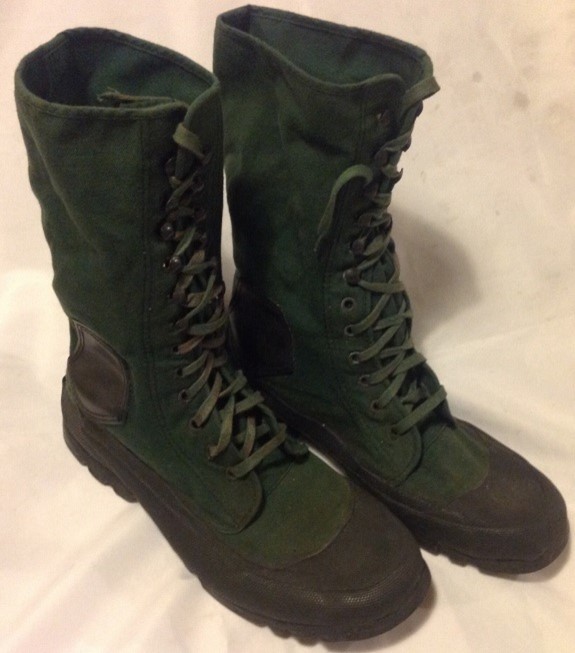 |
|
‘Bata boots’, colloquially named by soldiers after the Bata Shoe Company which produced them. Image credit: from the collection of the author of the blog Tales from the Supply Depot. |
Mike Smith
Hon. Curator


